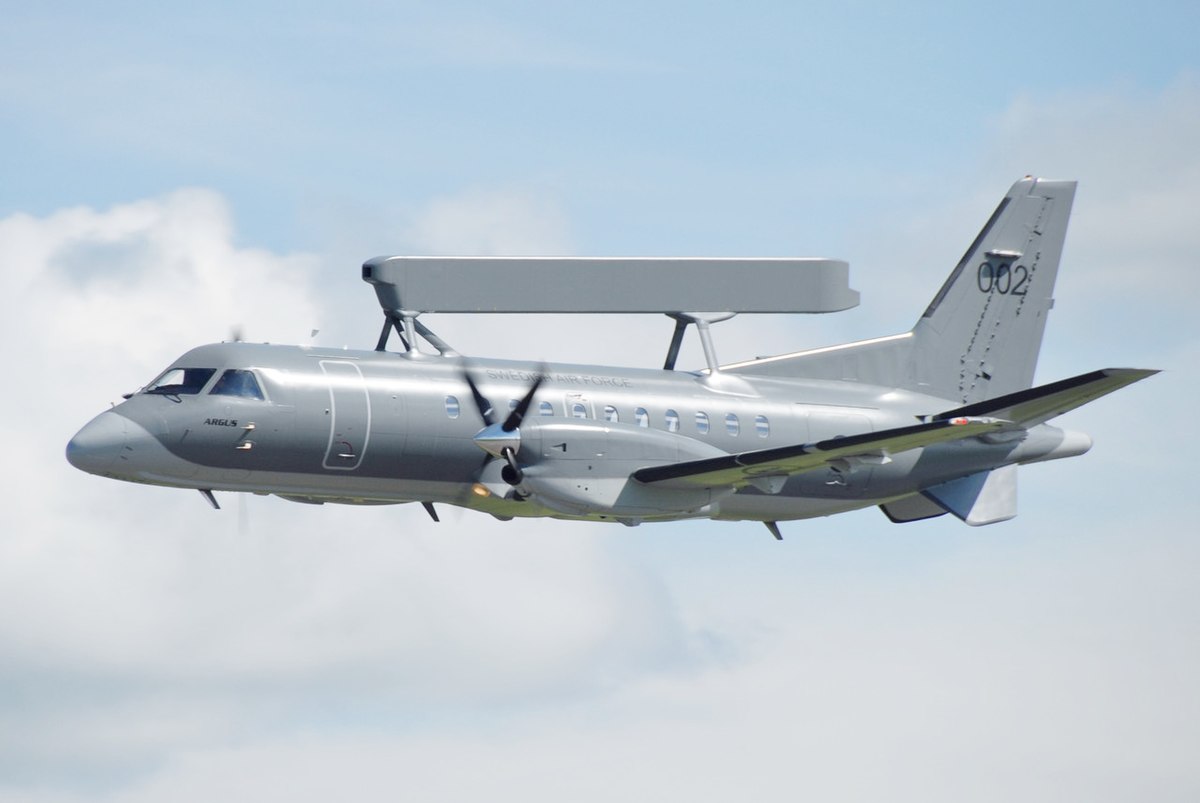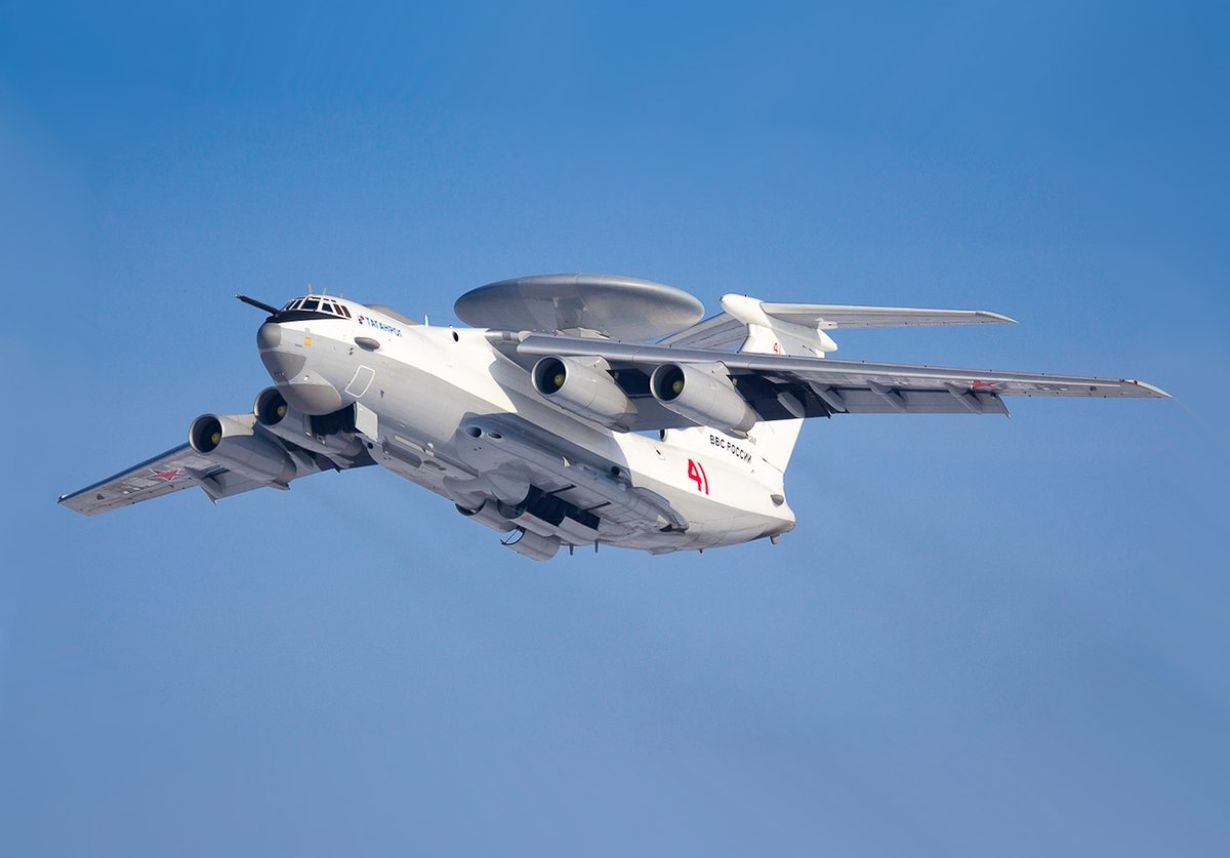In a significant and unexpected development, Sweden has announced it will supply Ukraine with two Saab 340 airborne early warning and control (AEW&C) aircraft as part of a new SEK 13.3 billion ($1.25 billion) military aid package.
The supply of the AEW&C aircraft marks the Nordic nation’s largest support package to date. The announcement came on May 29, as the Swedish government unveiled the details of what it termed “Military Support Package 16,” which primarily focuses on enhancing collective air defense capabilities.
The Saab 340 AEW&C aircraft, sometimes called the S 100D Argus or the ASC 890 in Swedish military service, is the central component of this military aid to Kyiv.
In an official statement, the Swedish Ministry of Defense highlighted that the ASC 890 aircraft would provide Ukraine with “an entirely new capability for airborne radar reconnaissance and combat control against targets in the air and at sea,” significantly enhancing Kyiv’s long-range detection and targeting capabilities.
These aircraft, equipped with state-of-the-art Erieye radars based on Active Electronically Scanned Array (AESA) technology, will revolutionize Ukraine’s surveillance capabilities, offering unparalleled airborne radar reconnaissance and combat control against airborne and maritime threats.
The Swedish Air Force operates only two of these sophisticated surveillance planes. The aid package indicates that one or both the planes would be transferred to Kyiv.
However, this move will temporarily reduce Sweden’s AEW&C capability, prompting Stockholm to expedite the acquisition of an additional Saab GlobalEye platform and accelerate the delivery of two units already on order. The first of these new aircraft is scheduled for delivery in 2027.
Sweden’s Minister of Defense, Pal Jonson, mentioned that the decision to send the planes to Ukraine followed “intensive discussions” with coalition countries. Jonson pointed out that the ASC 890 aircraft would substantially bolster Ukrainian air defense.
The deployment of these advanced aircraft is expected to complement the F-16 fourth-generation fighter jets set to be supplied by Belgium, Denmark, Norway, and the Netherlands, forming a robust air force capability coalition for Ukraine.
The timeline for the delivery of the ASC 890 aircraft to Ukraine has not been specified. However, their deployment will represent a critical enhancement to Ukraine’s military capabilities amid ongoing regional tensions.
AEW&C For Ukraine
The deployment of these aircraft holds considerable significance. The airborne early warning and control (AEW&C) aircraft offers an extensive overhead surveillance capability. This advantageous perspective would prove invaluable in detecting low-flying threats like Russian drones and cruise missiles.
These stealthy adversaries, with their minimal radar signatures and ability to operate at low altitudes, often evade conventional radar systems, posing a persistent menace to Ukrainian security.
With the anticipated deployment of F-16s into Ukraine’s military, the Saab 340 airborne early warning and control (AEW&C) is poised to undertake a pivotal and indispensable role in orchestrating fighter operations.
Tasked with a multifaceted role, the aircraft will be responsible for detecting, prioritizing, and guiding targets to facilitate their interception by fighter jets, ensuring a robust defense posture for Ukraine.
Valerii Romanenko, a leading researcher at the National Aviation University of Ukraine, emphasized the aircraft’s transformative impact, underscoring their ability to unlock the capabilities of the multi-role F-16 fighters.
According to Romanenko, the F-16 pilot will rely on visual cues displayed on the tactical situation screen rather than auditory signals to discern critical information such as designated targets, their proximity, recommended armaments, and optimal engagement strategies utilizing either active or passive systems.

He illustrated the effectiveness of passive systems by highlighting their ability to facilitate stealthy approaches toward enemy fighters, enabling undetected interception maneuvers.
Further, the Saab 340 integration with the NATO-standard Link 16 datalink communications system will ensure seamless coordination with allied air defense systems.
The real-time data exchange facilitated by Link 16 empowers operators aboard the Saab 340 (AEW&C) aircraft to furnish a comprehensive air defense picture and targeting data to compatible systems both airborne and on the ground.
This capability elevates the aircraft to a critical component within a modern integrated air defense system (IADS), reinforcing Ukraine’s defense capabilities against evolving threats.
Russian Air Force For AWACS?
Notwithstanding their significant operational advantages, the ongoing conflict has underscored the susceptibility of airborne early warning and control (AEW&C) systems to hostile action.
The Russian Air Force experienced the loss of two Beriev A-50 Airborne Warning and Control System (AWACS) planes to Ukrainian missile ambushes early this year. The Ukrainian forces even targeted the factory responsible for building and repairing the A-50s, highlighting the strategic importance of these aircraft.
The Saab 340 AEW&C, equipped with the Erieye radar system, boasts a detection range of up to 450 km for air targets. But, to surpass the effectiveness of NATO AWACS supporting Ukraine from Polish or Romanian airspace, the Ukrainian AEW&CS would have to operate within Ukrainian airspace.
However, this would make them vulnerable to assaults from Russian MiG-31BM and Su-57 fighters armed with R-37 air-to-air missiles, which have a range of 300 kilometers.
While the MiG-31BM may present a detectable threat to the SAAB AEWC&S, the Su-57’s advanced stealth characteristics could pose detection challenges. Regardless, the R-37M missiles carried by the R-37M aircraft would prove exceedingly difficult to evade.

The Royal United Services Institute noted earlier that the Mikoyan MiG-31BM interceptors patrolling near the Russia-Ukraine border effectively extend the threat radius across Ukrainian airspace with their R-37Ms.
This presence has repeatedly compelled Ukrainian fighter pilots to abort missions and seek refuge. However, the comparatively cumbersome Saab 340 lacks fighter aircraft’s evasive capabilities.
Due to inherent differences in performance, the vulnerability of Swedish-made AEW planes, like the Saab 340, may surpass that of the A-50s. The A-50 is equipped with four jet engines, enabling it to reach a speed of 560 miles per hour and ascend to altitudes of 39,000 feet.
In contrast, the Saab 340 utilizes twin turboprop engines, allowing it to achieve a maximum speed of 300 miles per hour and attain an altitude ceiling of 25,000 feet.
Russian fighter aircraft planning to confront AWACS platforms must take into account the NATO Patriot missile batteries stationed in Ukraine. Similarly, these Patriot systems need to stay alert for potential Kinzhal and Iskander-M ballistic missile strikes, which might be coordinated with attempts to disable AEW&C assets.
- Contact the author at ashishmichel(at)gmail.com
- Follow EurAsian Times on Google News




